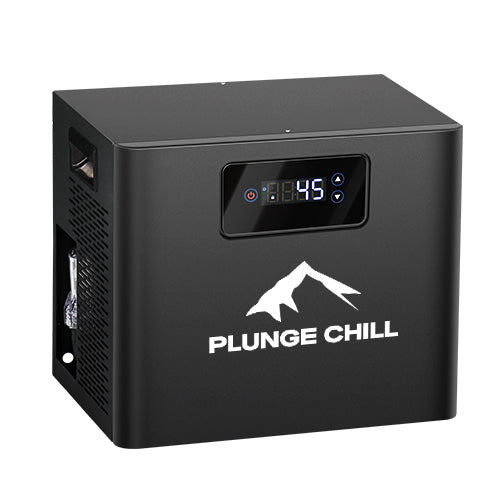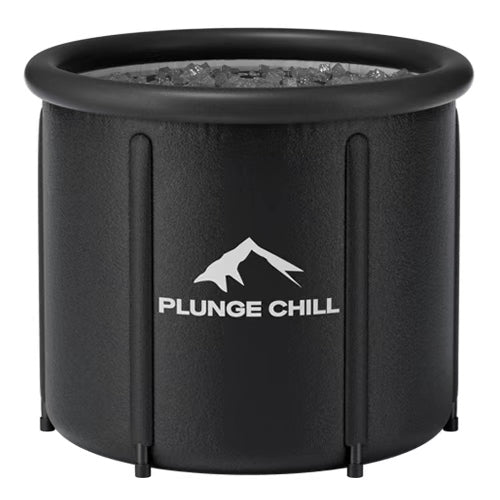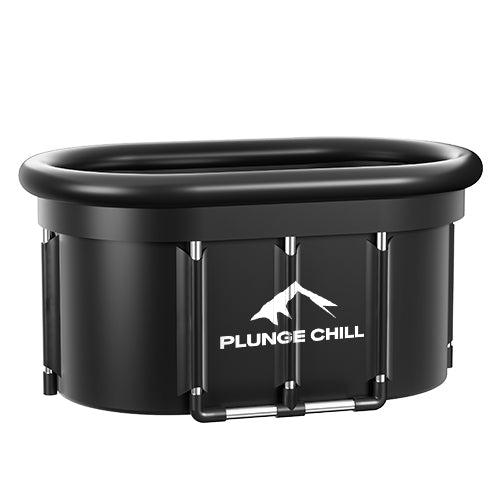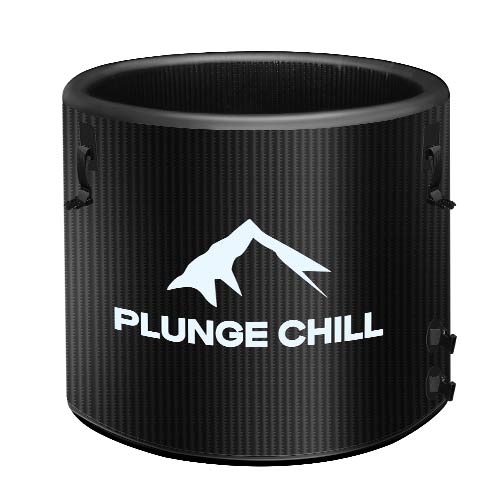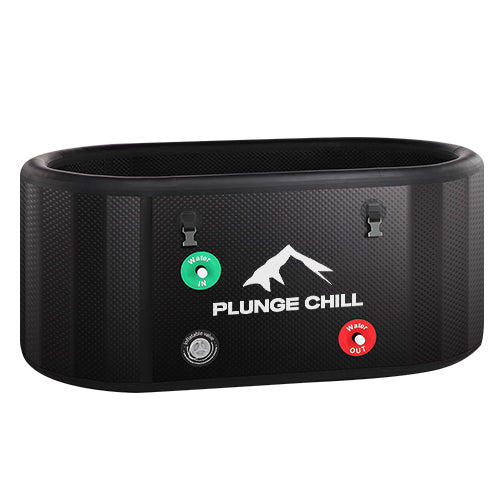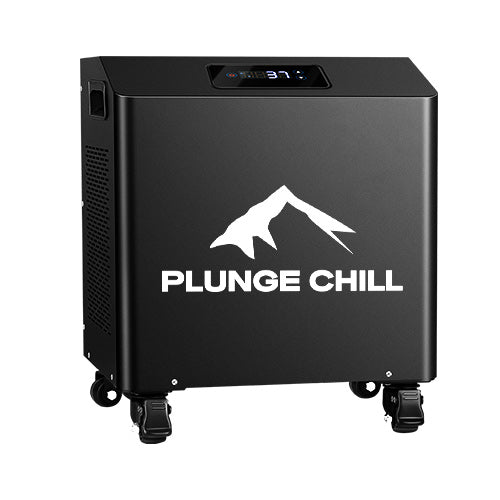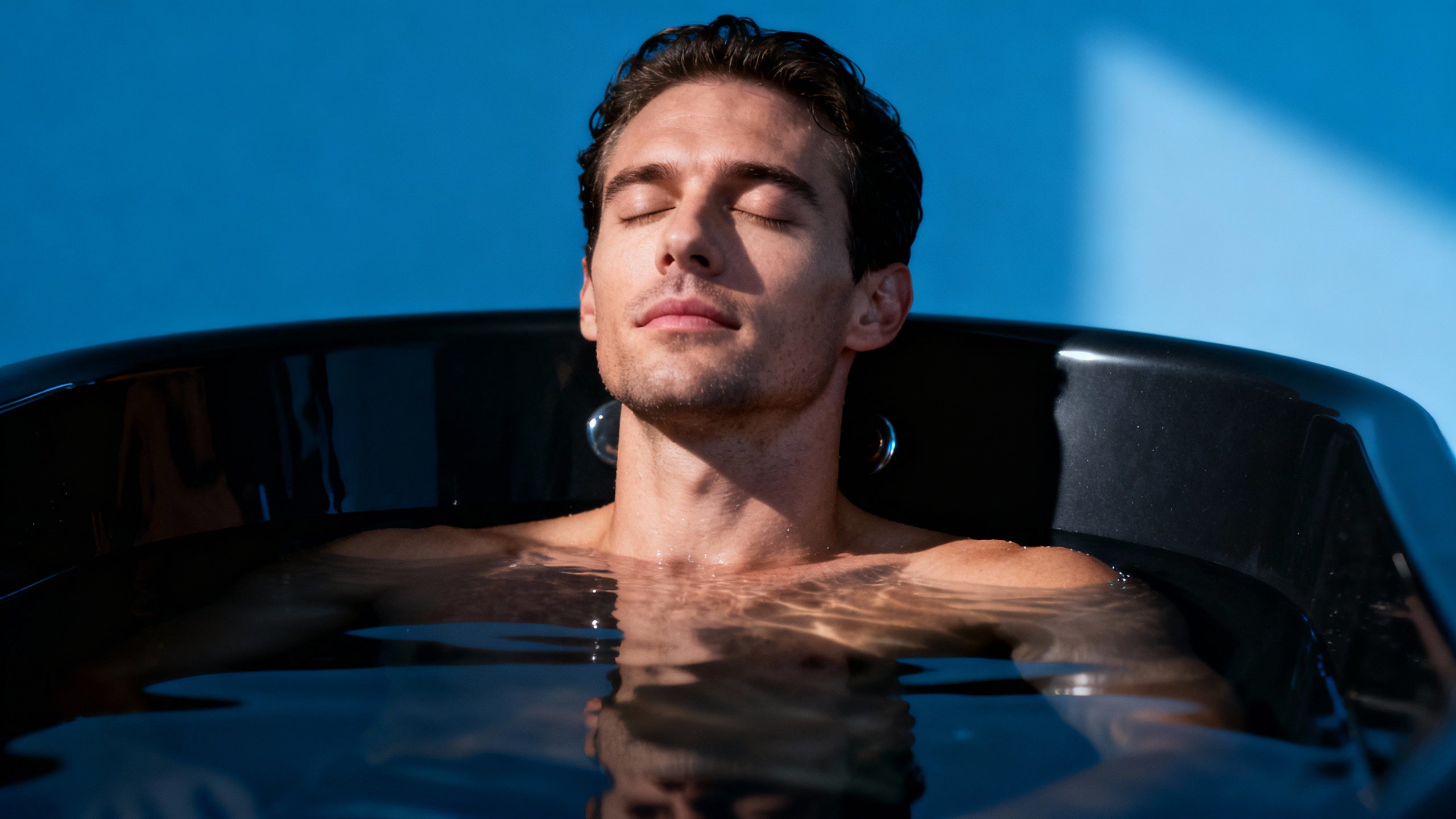Modern work can push even the most resilient professionals toward chronic stress, exhaustion, and a sense of diminished effectiveness. This cluster of symptoms is commonly described as burnout, and it does not stay neatly at the office. It disturbs sleep, concentration, mood, and relationships, and it can erode confidence day after day. Amid well‑established approaches such as therapy, boundary setting, rest, and exercise, many people now experiment with deliberate cold exposure—especially cold water baths—to feel re‑energized and calmer. In this guide, I explain what cold water baths are and are not, how they may help specific facets of burnout, where the science is promising vs. preliminary, and how to start safely with a practical, workplace‑friendly plan.
Burnout 101—and why cold might help
Burnout is often defined as a prolonged response to chronic stress marked by exhaustion, a more pessimistic or detached outlook, and a reduced sense of effectiveness that can spill into home life. Physical fatigue, painful tension, sleep disruption, and foggy cognition commonly travel with irritability, anxiety, or low mood. This picture matters for cold exposure because deliberate cold creates a brief, controlled stressor. In physiology, short, manageable doses of stress can provoke adaptive responses—sometimes called hormesis—while excessive or sustained stress does the opposite. A review in The Journal of Neuropsychiatry and Clinical Neurosciences describes cold exposure as a hormetic stimulus that acutely activates the neuroendocrine and autonomic systems, releasing catecholamines and endorphins and, over time, potentially improving coping capacity. That adaptive frame maps to what many people want from a burnout reset: more energy and balance, not a passive numbing.
Cold can also tap mechanisms relevant to anxious arousal. The “cold shock” creates a short surge in breathing and heart rate, then reflexes associated with facial immersion and the mammalian diving response can stimulate parasympathetic pathways that quiet the body. Stanford Lifestyle Medicine notes that full‑body cold tends to drive sympathetic activation, while facial exposure more directly engages parasympathetic circuits, a nuance you can leverage for calmer exits from stress peaks. In other words, properly dosed cold is not just another jolt; it can be a practical way to practice shifting your internal state—useful when work repeatedly pushes you into fight‑or‑flight.

What counts as a cold water bath?
A cold water bath, also called cold‑water immersion or an ice bath, is a brief submersion in cold water. Cleveland Clinic clinicians advise beginners to think in ranges rather than absolutes. For most new users, water between roughly 50–59°F is a sensible starting zone, with session length of one to three minutes and a ceiling of about five minutes. They also advise that newcomers can start much warmer, around 68°F, then progress downward over days or weeks. Advanced users sometimes venture to colder water, but highly frigid exposures confer more risk and are unnecessary for the aims of burnout relief.
Not all “cold therapy” is the same. A Case Western Reserve University overview contrasts home cold showers (often around 50–59℉ cooler than body temperature) and cold‑water immersion (which lowers core temperature more deeply) with whole‑body cryotherapy chambers that use extremely cold air near about −200 to −200°F for minutes. The evidence base and risk profiles differ; for workplace burnout goals, simple, safe, water‑based methods are the focus here.

What the science says—benefits you can reasonably expect
There is no single definitive trial proving that ice baths “cure” burnout. However, multiple lines of evidence support targeted benefits that are relevant to burnout’s core features: stress reactivity, mood, sleep, cognitive clarity, and body soreness from sedentary strain or renewed exercise. The key is matching expectations to what has been observed—and avoiding overreach.
A 2023 fMRI study in healthy adults published in PubMed Central found that a single five‑minute, head‑out immersion at about 68℉ increased positive affect (participants reported feeling more active, alert, attentive, proud, and inspired) and reduced distress and nervousness immediately afterward. The brain data suggested tighter interaction among large‑scale networks involved in attention, emotion, and self‑regulation—plausible neural underpinnings for the subjective lift. These are acute effects; durability requires regular practice, which is a recurring theme in cold‑exposure research.
Short‑term cardiovascular and stress markers can also shift favorably. Work from the University of Oregon reported immediate reductions in heart rate, blood pressure, and cortisol after a single 15‑minute immersion in college students, alongside improved mood hours later. These findings support a near‑term “calm and focus” window after cold. Harvard Health summarized a pooled analysis of human studies suggesting that cold immersion reduces stress levels, with a notable delay of about 12 hours for ice bath benefits, and that men reported improved sleep. Interestingly, cold showers—easier to fit into a workday—were linked to higher quality‑of‑life scores versus warm showers.
For the sore, tight body that often accompanies high hours at a desk, there is more robust evidence for specific outcomes. A Cochrane‑style review in PubMed Central found that cold‑water immersion reduces delayed‑onset muscle soreness at 24–48 hours after exercise. That said, the same review and sports physiology work caution against using ice baths immediately after heavy resistance training if your goal is muscle growth, since post‑training cold can blunt hypertrophy signaling. If building strength or size is your priority, choose timing that protects those adaptations: wait several hours after lifting, or keep cold for non‑training days.
There is also a credible explanation for why cold can help some people sleep better during high‑stress periods. Cold exposure acutely stimulates noradrenaline and adrenaline and then allows for a counter‑swing as the body reheats; the Harvard Health summary noted better sleep in men after ice baths in pooled data, though benefits in women were not consistently observed and results overall were heterogeneous. If sleep is your pain point, earlier‑in‑the‑day exposures are generally recommended to avoid late‑evening arousal.
Two cautions deserve emphasis. First, an authoritative Case Western Reserve University review concludes that many sweeping claims remain anecdotal; large randomized trials in the general population are lacking, and effects depend on context and exercise status. Second, expectancy matters. The Psychiatry & Psychotherapy community and related academic discussions highlight that placebo and expectation effects can inflate benefits, especially in wellness trends. Framing cold exposure as one tool inside a larger plan—rather than a miracle—keeps your evaluation clear.

A practical protocol for busy professionals
For burnout relief, the aim is not Olympic‑level cold tolerance. It is to install a reliable, brief practice that lifts mood and stress regulation without derailing the workday or training goals. These steps align with clinical guidance from Cleveland Clinic and Stanford Lifestyle Medicine, while integrating insights from Harvard Health and sports science reviews.
|
Goal or context |
Temperature target |
Duration and frequency |
Notes and rationale |
|
First two weeks, low confidence |
Around 64–68°F |
One to two minutes, three to five days per week |
This “cool but tolerable” exposure reduces shock while teaching breath control and exit cues. It is an easy add at the end of a warm shower. |
|
Baseline practice for burnout relief |
Around 50–59°F |
Two to three minutes per session, two to four sessions per week |
This range is common for beginners in clinical guidance. It offers a meaningful jolt with manageable risk. Many people target roughly 11 minutes per week split across several sessions. |
|
Focused calm during acute stress |
Brief facial immersion in cold water or a cool compress |
10–30 seconds as needed |
Facial immersion preferentially engages parasympathetic pathways and can be used at the desk to interrupt stress spikes without full‑body cold. |
|
After heat workouts or on sore days |
Around 50–59°F |
One to five minutes |
Useful for soreness and cooling. Avoid immediately after heavy lifting if muscle growth is a priority; schedule cold several hours later or on rest days. |
|
Not advised without supervision |
Below about under 40°F or extended times beyond 10 minutes |
Any frequency |
Very cold temperatures or long exposures increase risks without added benefits for burnout. Advanced protocols are not necessary for workplace well‑being goals. |
If you prefer swift morning activation, consider a two‑ to three‑minute plunge or cold shower shortly after waking. If sleep is fragile, avoid late‑evening sessions to prevent alertness spikes near bedtime. For midday slumps, a brief one‑minute cold shower can restore alertness without overstimulation.

Safety first—who should be careful or avoid it
Safety is not a fine print detail with cold water. Cleveland Clinic clinicians and the Case Western Reserve University review emphasize that cold exposure raises heart rate and blood pressure and can provoke arrhythmias. People with heart disease, prior stroke, poorly controlled hypertension, diabetes with neuropathy, significant peripheral vascular disease, Raynaud’s phenomenon, or a history of syncope should speak with a clinician before trying. Beta‑blockers can alter adaptation to the adrenergic surge. The neuropsychiatry review underscores the risk of hypothermia and cognitive slowing with longer or colder exposures. Avera also notes that children, older adults, and those with very low body weight or low body fat should avoid cold plunges, and that vulnerable groups should be particularly cautious.
Practical safety rules reduce risk and increase confidence. Enter slowly, control your breathing during the first 10–20 seconds when cold shock peaks, and get out if your breathing cannot be controlled, if you feel chest pain, dizziness, or numbness that does not resolve. Avoid swimming alone in open water; if you are new to immersion, have a partner present or start with showers. After sessions, rewarm gradually; some practitioners prefer to let the body reheat itself for a few minutes before applying external heat, but if you are uncomfortable, prioritize gentle rewarming. The point is comfort and safety, not performance.
How to set up at home—and what to buy (and skip)
You do not need a designer plunge tub to benefit. Cleveland Clinic specifically mentions that collapsible plunge tubs exist, but a simple bathtub or sturdy container is fine. Sun Home Saunas recommends placing your setup on a non‑slip surface and being able to maintain consistent cold water levels. Verywell Mind recommends using a digital thermometer to check water temperature; judging by feel is unreliable when you are new. For first exposures, a cold shower is an excellent laboratory: start warm, then turn to cold at the end for 30–60 seconds, and extend over time.
A basic kit that covers safety and usability is straightforward. A container large enough to submerge to the chest without crowding, a digital thermometer, and an accessible timer are sufficient. If you are sharing a tub, keep hygiene in mind between users. If you plan to practice in open water, choose supervised, safe access points and begin with the shoreline rather than diving.
The two most common early mistakes are chasing extreme cold for bragging rights and staying in too long. Neither improves burnout; both increase risk. The conservative ranges above were chosen because they offer the “state shift” many people seek without courting problems. Sun Home Saunas suggests starting with 30–90 seconds and progressing to only a few minutes; Harvard Health’s overview of interventions likewise centered on brief exposures multiple days per week rather than marathons.
Pros and cons at a glance
A balanced view serves you best. On the pro side, deliberate cold can produce rapid improvements in alertness and positive affect that are useful for breaking rumination cycles, and pooled evaluations have linked regular cold exposure to reductions in stress and, for men, better sleep after ice baths. The soreness‑relief data after exercise are consistent, which matters for people ramping up activity to combat burnout. Cold exposure can also become a practice in top‑down regulation: you learn to steer breath and attention amid discomfort, a skill that transfers to difficult meetings or deadlines.
On the con side, evidence for broad improvements in mood and immunity across the general population is mixed, with heterogeneity in temperature, duration, and protocols. Expectancy effects and selection bias are likely contributors in wellness trends. Cold can acutely elevate blood pressure and trigger arrhythmias in susceptible individuals, and very cold water or long exposures increase risk without adding value for burnout. Cold immediately after heavy lifting can blunt gains; ill‑timed use can therefore work against your fitness goals.
How to fold cold into a real burnout‑recovery plan
Cold water practices work best as part of a comprehensive plan. Several medical and lifestyle sources emphasize that cold exposure should complement, not replace, proven treatments and habits. If you are in psychotherapy, consider using cold as an “activation window” before sessions to increase alertness and engagement, or as a reset after demanding days to prevent work stress from bleeding into home life. If you are restarting exercise to rebuild energy and mood, deploy cold after heat workouts for comfort and soreness relief—but protect strength‑training adaptations by placing cold on separate days or hours later.
Track what matters to you. A simple note in your phone about mood, sleep, and stress for 12–24 hours after sessions, as Sun Home Saunas suggests, helps you find the dose and timing that pay off. Social connection also matters for adherence; a small, committed group at work or in your neighborhood can make the practice safer and more enjoyable, echoing anecdotal observations that community supports consistency.
Evidence limits—and how to be a smart consumer
The most responsible high‑level summary is that benefits are context‑dependent and the risk profile is real. Case Western Reserve University’s overview concludes that many claims are not supported by large randomized trials in the general population, and that even among athletes, effects are mixed and depend on the sport and timing. Harvard Health’s research highlights found cold improved stress but not consistently mood or immunity across studies, with protocols ranging widely. Psychology Today and the Psychiatry & Psychotherapy community both warn about confounds like self‑selection and placebo. The upshot is simple: start conservatively, evaluate your own response, and keep cold in its lane as one tool among several evidence‑based supports, not a panacea.
Frequently asked questions
How cold should my water be if I am brand new to this?
Beginners do well starting warmer than they think. Cleveland Clinic suggests that people new to cold can begin at around 68°F for a minute or two, then progress toward 50–59°F as confidence grows. There is no benefit for burnout in plunging far below about 39.2–41℉; risk rises as water gets colder.
How long should I stay in, and how often should I do it?
Two to three minutes per session, a few days per week, is a practical baseline that aligns with clinician guidance and real‑world protocols summarized by Harvard Health. Many people find a weekly total of about 10–12 minutes split across multiple sessions delivers benefits without fatigue. If you are sensitive or anxious about cold, begin with 30–60‑second finishes to a warm shower.
Will cold water baths help me sleep if burnout is wrecking my nights?
Possibly, but timing matters. A pooled analysis summarized by Harvard Health reported improved sleep in men after ice baths; women did not show the same pattern, and protocols varied widely. Because cold can be stimulating, earlier‑in‑the‑day exposures are safer for sleep. Evaluate your own response over a couple of weeks.
Can I use an ice bath right after lifting weights?
It is better to wait or save cold for non‑lifting days if your goal is muscle growth. Reviews in sports science and physiology, and commentary from performance educators, note that post‑training cold can blunt hypertrophy by dampening anabolic signaling. If you lift after work, consider placing cold the next morning.
Is a cryotherapy chamber better than a cold water bath?
They are different modalities with different risk and evidence profiles. Case Western Reserve University compares cold showers, cold‑water immersion, and whole‑body cryotherapy. For burnout relief, water‑based methods are sufficient and generally more accessible. There is no clear need for extreme cold air exposures for workplace well‑being objectives.
Who should avoid cold water immersion or talk to a doctor first?
Anyone with heart disease, prior stroke, poorly controlled hypertension, diabetes with neuropathy, significant vascular disease, Raynaud’s phenomenon, or a history of fainting should seek medical advice before starting. Children, older adults, and those with very low body fat should avoid cold plunges. If you are pregnant or take medications that affect circulation or blood pressure, consult your clinician. These cautions echo guidance from Cleveland Clinic and Avera.
Takeaway
Cold water baths can be a surprisingly practical tool for easing parts of workplace burnout. The most consistent short‑term effects are improved alertness, a lift in positive affect, and reduced stress reactivity, with further promise in sleep and soreness management when protocols are matched to goals. The evidence base is growing but heterogeneous; the strongest conclusions favor modest, regular exposures rather than extreme protocols, and cold should be integrated into—not substituted for—proven treatments and rest. If you decide to try it, choose safe temperatures in the 50–59℉range, keep sessions short, time them to support sleep and training, and track how you feel for the next day. With those guardrails, cold can become a small, consistent practice that helps you meet work with more energy and a steadier mind.
Sources and notes
The guidance above synthesizes clinical recommendations and research summaries from Cleveland Clinic and Stanford Lifestyle Medicine, evidence reviews and mechanistic overviews from The Journal of Neuropsychiatry and Clinical Neurosciences and PubMed Central articles, a Case Western Reserve University risk‑benefit review, observational and pooled analyses summarized by Harvard Health, and practical considerations discussed by University of Oregon investigators, Avera, and performance educators. Where protocols vary or evidence is preliminary, this is stated explicitly, and confidence is suggested accordingly.
References
- https://case.edu/news/science-behind-ice-baths-and-polar-plunges-are-they-truly-beneficial
- https://cupola.gettysburg.edu/cgi/viewcontent.cgi?article=2078&context=student_scholarship
- https://www.health.harvard.edu/staying-healthy/research-highlights-health-benefits-from-cold-water-immersions
- https://digitalcommons.liberty.edu/cgi/viewcontent.cgi?article=8439&context=doctoral
- https://lifestylemedicine.stanford.edu/jumping-into-the-ice-bath-trend-mental-health-benefits-of-cold-water-immersion/
- https://news.uoregon.edu/content/cold-plunging-might-help-heart-health-new-research-suggests
- https://pmc.ncbi.nlm.nih.gov/articles/PMC11872954/
- https://www.ie.edu/center-for-health-and-well-being/blog/the-wim-hof-method-extreme-stress-management-with-remarkable-benefits/
- https://health.clevelandclinic.org/what-to-know-about-cold-plunges
- https://www.ptsduk.org/ice-baths-wim-hof-and-ptsd/
Disclaimer
By reading this article, you acknowledge that you are responsible for your own health and safety.
The views and opinions expressed herein are based on the author's professional expertise (DPT, CSCS) and cited sources, but are not a guarantee of outcome. If you have a pre-existing health condition, are pregnant, or have any concerns about using cold water therapy, consult with your physician before starting any new regimen.
Reliance on any information provided in this article is solely at your own risk.
Always seek the advice of a qualified healthcare provider with any questions you may have regarding a medical condition, lifestyle changes, or the use of cold water immersion. Never disregard professional medical advice or delay in seeking it because of something you have read in this article.
The information provided in this blog post, "How Cold Water Baths Can Help Overcome Workplace Burnout," is for informational and educational purposes only. It is not intended to be a substitute for professional medical advice, diagnosis, or treatment.
General Health Information & No Medical Advice
